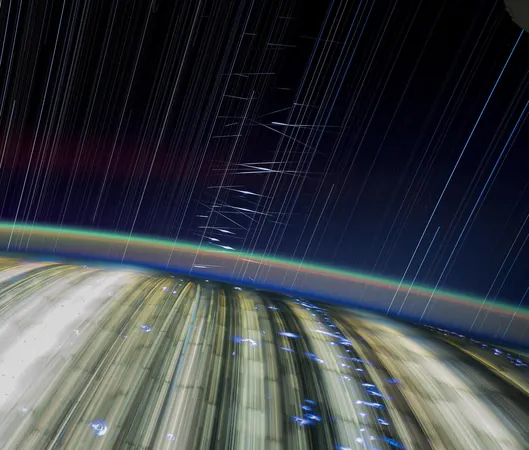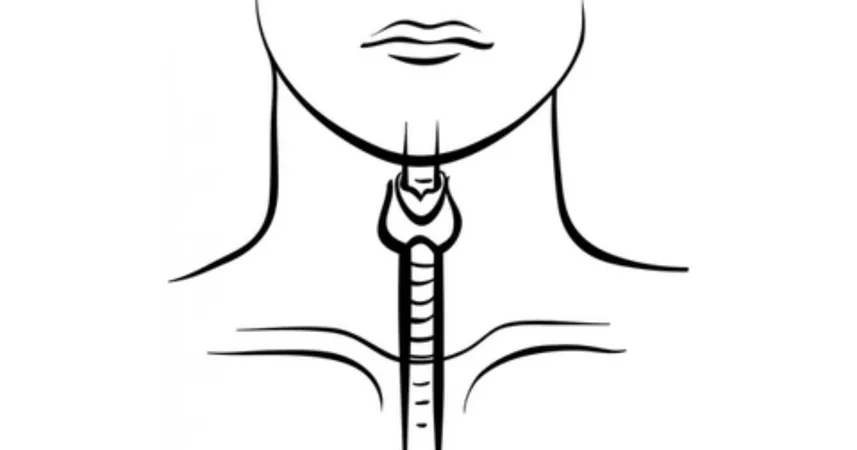
Astronomers vs. Satellite Dynamos: The Battle for Dark Skies
2025-05-27
Author: Mei
The Struggle for Starry Nights
As the number of satellites rocketing into Low Earth Orbit (LEO) skyrockets, astronomers find themselves caught in a David versus Goliath scenario. While many hail these advancing technologies as a boon for global connectivity, stargazers lament them as a growing nuisance, obstructing their view of the cosmos.
A Skyful of Satellites
Predictions suggest that by 2032, the number of satellites could soar to a staggering 43,000, leaving Earth with almost no dark spots to gaze at the night sky in peace. Satellites reflecting sunlight off their metallic surfaces and equipped with bright lights create an overwhelming brightness that dims celestial observations.
For radio astronomers, this saturation translates to chaos, as the radio waves used to communicate are scattered in a cacophony of signals from operational satellites. The omnipresent hum of electronic components further complicates the task of capturing signals from distant celestial phenomena.
A Call for Action
Leading the fight, the International Astronomers Union Centre for the Protection of the Dark and Quiet Sky from Satellite Constellations (IAU CPS) is calling for robust regulations to mitigate light and radio pollution in space.
Their ambitious demands include extending environmental protection laws to outer space, limiting light pollution from future spacecraft, establishing standards to curb electromagnetic interference, and enforcing existing regulations that safeguard radio astronomy. Yet, progress has been achingly slow.
The International Dialogue
Engaging with the United Nations Committee on the Peaceful Uses of Outer Space (COPUS), the IAU CPS has initiated discussions focusing on the need for dark and quiet skies. However, as noted by Giuliana Rotola, head of Policyhub at IAU CPS, achieving binding legal measures has proven elusive, with many discussions resulting in only non-enforceable guidelines.
Legislation in the Works
In the US, Senator John Hickenlooper introduced the Dark and Quiet Skies Act, aiming to promote voluntary best practices to diminish optical and radio interference in the cosmos.
Industry Engagement: A Mixed Bag
While advocates have turned to satellite companies for collaboration, the response has been varied. SpaceX has stepped up, implementing changes to reduce the glare of their satellites with anti-reflective coatings and sun visors, but their growth in satellite deployments continues to raise concerns.
On the other hand, companies like AST SpaceMobile launched their BlueWalker 3 satellite, which became one of the brightest objects in the night sky, demonstrating the challenge of balancing innovation with the preservation of our dark skies.
Innovative Solutions
The IAU's research team has developed tools like SatChecker, designed to help astronomers navigate around these bright interlopers, alongside a Satellite Constellation Observation Repository (SCORE) that tracks and catalogs brightness data, enabling researchers to plan their observations more strategically.
A Growing Collaboration
As the landscape of satellite deployment evolves, both astronomers and satellite operators are gradually finding common ground, yet the urgency to act before the situation escalates to a crisis remains palpable. Mike Peel aptly emphasizes the concern over what the future holds if a million satellites crowd our skies.

 Brasil (PT)
Brasil (PT)
 Canada (EN)
Canada (EN)
 Chile (ES)
Chile (ES)
 Česko (CS)
Česko (CS)
 대한민국 (KO)
대한민국 (KO)
 España (ES)
España (ES)
 France (FR)
France (FR)
 Hong Kong (EN)
Hong Kong (EN)
 Italia (IT)
Italia (IT)
 日本 (JA)
日本 (JA)
 Magyarország (HU)
Magyarország (HU)
 Norge (NO)
Norge (NO)
 Polska (PL)
Polska (PL)
 Schweiz (DE)
Schweiz (DE)
 Singapore (EN)
Singapore (EN)
 Sverige (SV)
Sverige (SV)
 Suomi (FI)
Suomi (FI)
 Türkiye (TR)
Türkiye (TR)
 الإمارات العربية المتحدة (AR)
الإمارات العربية المتحدة (AR)